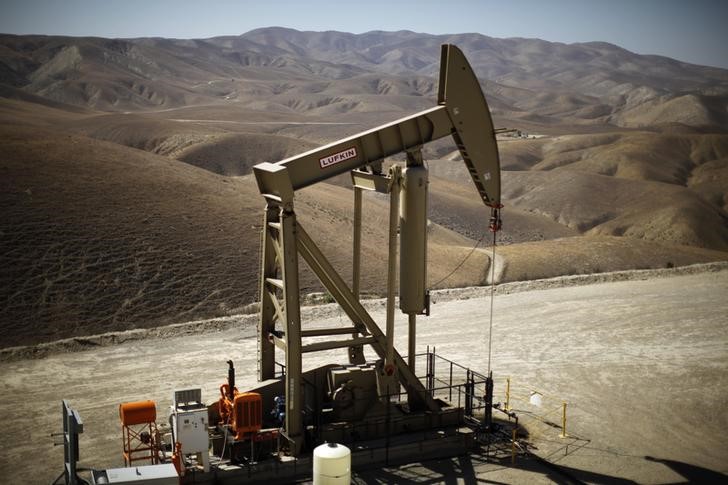Investing.com — Goldman Sachs in a note dated Monday adjusted its forecast for prices, lowering the expected trading range to $70-$85 per barrel. This revision marks a $5 per barrel reduction from previous estimates and is driven by several key factors, including unexpectedly high OECD inventories, slower-than-anticipated demand growth from China, and an increase in U.S. oil production.
The updated forecast underscores Goldman Sachs’ cautious outlook on global oil markets, shaped by the intricate balance of supply, geopolitical risks, and economic factors.
One of the primary drivers behind Goldman Sachs’ decision to lower its Brent oil price range is the unexpected stability in OECD commercial inventories.
Contrary to earlier expectations of drawdowns during the summer months, inventories have remained higher than anticipated.
This stability is largely attributed to a surge in U.S. liquids supply, which has offset some of the seasonal demand.
Additionally, weaker demand growth from China has played a crucial role in this inventory buildup. Together, these factors have contributed approximately $3-$4 per barrel to the downward revision of the Brent price range.
The increase in U.S. oil production has also had a significant impact on Goldman Sachs’ revised forecast.
“Our August US Lower 48 crude production nowcast has risen to 11¼mb/d, 0.2mb/d above our expectations,” the analysts said.
This increase has been driven by efficiency gains among U.S. shale producers, who have continued to enhance productivity despite challenging market conditions.
The robust growth in U.S. oil production has further contributed to the downward pressure on Brent prices, as it adds to the global supply.
China, a key engine of global oil demand, has exhibited a marked slowdown in demand growth, which has further influenced Goldman Sachs’ outlook.
Structural changes within China’s economy, including a shift from oil to electricity in transportation and weaker petrochemical demand, have dampened the country’s oil consumption.
The slowdown in China’s demand growth, coupled with global economic uncertainties, has led Goldman Sachs to lower its forecast for global oil demand growth in 2024 from 1.2 mb/d to 0.9 mb/d.
This adjustment reflects the growing concerns about the sustainability of demand recovery in the face of ongoing challenges.
In addition to these immediate factors, Goldman Sachs has also revised its long-term outlook for Brent oil prices.
The fair value estimate for long-dated Brent prices has been reduced by $2 per barrel to $70 per barrel.
This adjustment is driven by efficiency gains in U.S. shale production, an upgraded outlook for peak oil production projects, and expectations of cheaper global prices starting in 2026.
The anticipation of lower natural gas prices could reduce oil demand, further supporting the case for a lower long-term price range for Brent.
Goldman Sachs expects that the Organization of the Petroleum Exporting Countries (OPEC) will begin to unwind its extra voluntary production cuts by the fourth quarter of 2024.
This shift could potentially move the market from its current short-run equilibrium, where OPEC has played a key role in supporting spot balances, to a more long-term approach focused on disciplining non-OPEC supply.
As OPEC gradually increases production, the market may face additional downward pressure on Brent prices, particularly if the organization aims to maintain its market share while balancing global demand and supply.
While Goldman Sachs’ revised forecast for Brent oil prices reflects a cautious outlook, there are risks that could influence market dynamics. The potential for prices to dip below the $70 floor in the short term is heightened by the combination of high spare capacity, ongoing geopolitical tensions, and possible reversals of OPEC’s cuts.
On the other hand, oil price volatility could increase due to unresolved geopolitical conflicts, potential disruptions in Iran’s oil supply, and the current market’s low volatility pricing.
Read the full article here
















